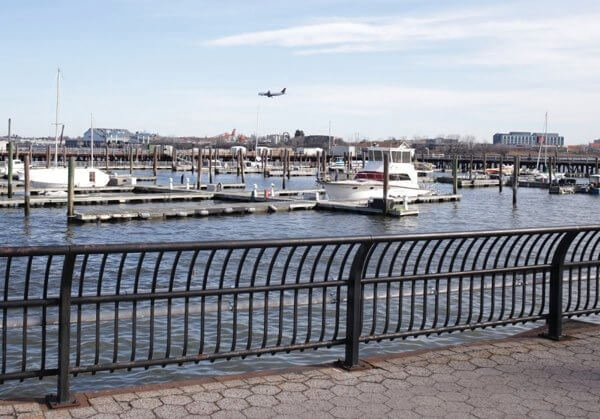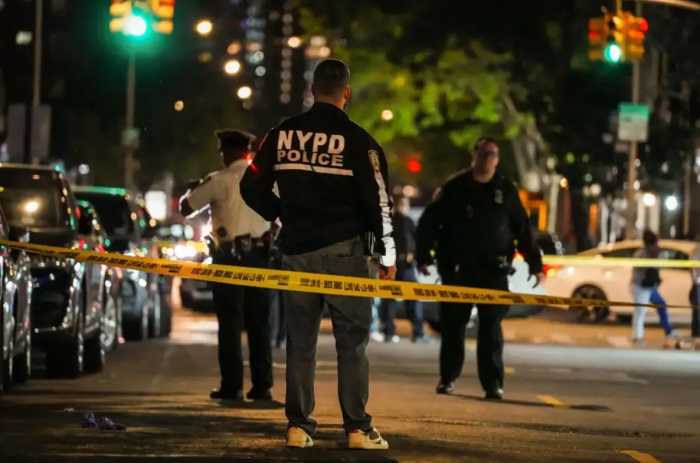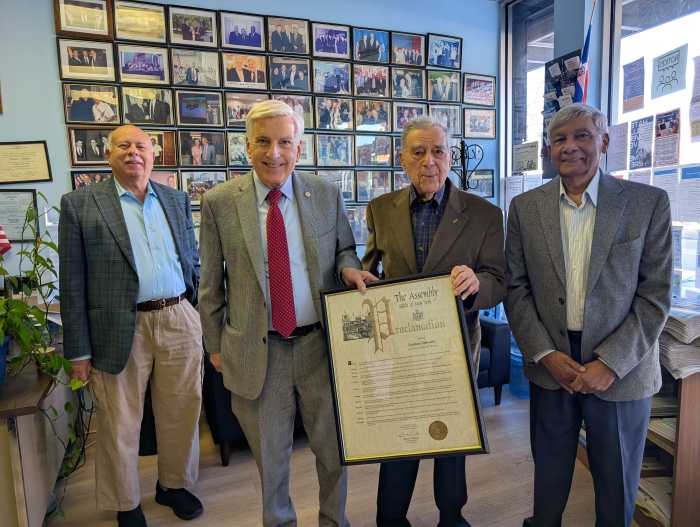By Carlotta Mohamed
Flushing Bay no longer stinks.
City Department of Environmental Protection Commissioner Vincent Sapienza joined community leaders and environmental advocates June 29 to announce substantial progress has been made on more than $200 million in ecological improvements for Flushing Bay.
The investment in environmental upgrades to improve the health of the bay in the vicinity of the World’s Fair Marina has allowed for dredging of 89,000 cubic yards of sediment, an upgraded sewer system to prevent 225 million gallons of pollution from being discharged into the bay each year, and ongoing construction of more than three acres of new wetlands that will naturally filter the water in the bay.
“Removing historical pollution, increasing the capacity of the sewer system to reduce overflows, and building new wetlands that will filter the water and provide a habitat for wildlife has created a new start for the ecological health of Flushing Bay,” Sapienza said.
Bordered on the west by LaGuardia Airport and the Grand Central Parkway, on the south by Northern Boulevard, and on the east by College Point, Flushing Bay serves as a vital route for boats, ferries, and other vessels heading to the East River.
Flushing Bay residents have long complained about the stench in the area.
The built-up sediment in the bay contained a lot of decomposed organic material creating a “rotten egg smell,” according to Roy Tysvaer, DEP project manager. Tysvaer said the lingering odor is gone now since the material has been removed.
The $15.4 million project to dredge portions of Flushing Bay in the vicinity of the World’s Fair Marina and two combined sewer outfalls began in January 2017 and was completed the same year, according to the DEP.
“This work has significantly reduced nuisance odors in the area,” said Tysvaer. “Long-reach excavators situated on the floating barges dredged 91,000 cubic yards of sediment over a 17.5 acre area.”
The shoreline is now filled with 110,000 plugs of switchgrass, saltgrass, seaside goldenrod, smooth cordgrass and other wetland plants, the DEP said. Most of the work, including the $19.2 million wetlands restoration component, will be completed by the end of July. The planting and monitoring of the wetlands will continue for the next several years.
Non-native trees, 78 deteriorated timber piles, and an abandoned pier were also removed to improve views along a portion of the 1.4-mile long Flushing Bay Promenade. Tysvaer said it’s “aesthetically pleasing.”
According to the DEP, wetlands help to absorb storm surge, filter impurities from the water, increase dissolved oxygen levels, reduce coastal erosion, capture greenhouse gases, and serve as a productive ecological habitat and nursery for juvenile fish.
“This investment in Flushing Bay represents a good first step to reclaiming our waterfront, and I thank DEP for working in good faith with our community,” said Councilman Peter Koo (D-Flushing). “I look forward to continuing these important efforts together to seek new way to make sure Flushing Bay and Creek are able to live up to their currently unrealized potential as sources of environmental pride.”
In addition, the city completed $33 million subsurface sewer upgrades in the spring targeting five locations between the Long Island Expressway and LaGuardia Airport: 108th Street and the Horace Harding Expressway, 108th and 43rd Avenue, Ditmars Boulevard and 31st Drive, Ditmars and 100th Street, and the LaGuardia Airport Maintenance Yard.
The work focused on raising and lengthening the weirs that direct the wastewater to the Bowery Bay Wastewater Treatment Plant. By directing additional wastewater to the treatment facility, the project has reduced sewer overflows into Flushing Bay by 225 million gallons annually.
The long-blighted Flushing Bay is one of the city’s most precious waterways,” said Councilman Costa Constantinides (D-Astoria), chair of the City Council Committee on Environmental Protection. “Rebuilding our ecosystems doesn’t just reopen areas of Flushing Bay to the public, it makes all of New York City more sustainable for the future.
The sewer optimization, environmental dredging, wetland construction and green infrastructure projects are part of agreements between the DEP and the state Department of Environmental Conservation that aim to improve harbor water quality throughout New York City.
The DEP also has ongoing construction in College Point of more than 400 new catch basins and nearly 12 miles of new sanitary and storm sewers that will continue through 2021. This work will remove three existing combined sewer outfalls that empty into Flushing Bay, thereby avoiding the release of nearly 50 million gallons annually of combined sewer overflow.
Existing wetlands in the vicinity of MacNeil Park will also be expanded with the planting of an additional 10,000 square feet of Saltmarsh Cordgrass.
James Servino, a marine biologist who lives in College Point and the environmental chairman of Community Board 7, said the DEP’s installation of storm pipes at McNeil Park last year were destructive and are killing the marine habitat, where there are oysters, shellfish, fishery, horseshoe crabs and a wide variety of wildlife.
“Into construction, the pipes that they installed are spewing out contaminated waste and street affluent into McNeil Park and have killed a state-protected habitat that I have a permit for to grow shellfish,” said Servino.
Servino said during the pipe installations his home was damaged.
“One of the pipes was running past my block. They reconnected the wrong pipes and did damage to the pipes and flooded my basement with sewage,” said Servino. “We have a lawsuit with the city. We’re suing the contractor and for damages to my personal home.”
Reach reporter Carlotta Mohamed by e-mail at cmoha



































